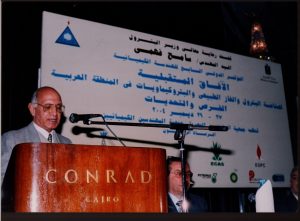
CORROSION PREVENTION AND CONTROL IN HIGH
PRESSURE OIL AND GAS TRANSMISSION PIPELINES
INTRODUCTION:
At the start of the 1990s there were concerns over the increasing threat of
corrosion to the integrity of high-pressure oil and gas transmission pipelines.
For example:
• Corrosion was the major cause of reportable incidents in North America[ 1]
• Corrosion was the major cause of pipeline failure in the Gulf of Mexico[ 2]
• Corrosion in a North American onshore oil pipeline had required over $1
billion in repairs[ 3]
• Internal corrosion along the complete length of pipelines had resulted in
replacement[ 4].
However, the worldwide published failure statistics indicate that the
incidents of corrosion are not increasing year on year[ 5- 9]. Indeed,
CONCAWE[ 8,9] statistics (for
pipelines in Western Europe)
show that the failure rate from
corrosion (the most likely failure
mode with increasing age) has not
increased with pipeline age
In fact the statistics for
gas pipelines in Europe, published
Figure 1 – Rate of Pipeline Failure Due
to Corrosion
in the EGIG database, indicates that the number of incidents due to corrosion is
actually decreasing.
The reason is the increasing use of corrosion management technologies to
reduce corrosion risks. Indeed, it is now expected that pipeline operators utilise
appropriate maintenance to prevent corrosion failures. For example, a North
American operator has recently been fined a record $30 million because
“corrosion caused most of the (300 oil) spills and they could have been
prevented with proper operations and maintenance”[ 10].
This paper describes the successful corrosion management technologies
which pipeline operators have adopted to prevent and control the threats of
internal and external corrosion, including:
• risk based inspection (RBI) methodologies, which allow the principle threats
to pipeline integrity to be identified and appropriate management plans
defined,
• internal inspection, which allows corrosion to be detected before it causes
failure,
• above ground surveys, which allow pipeline sections which are at risk from
corrosion (coating faults, ineffective CP, low soil resistivity) to be identified,
• alignment of internal inspection and above ground survey data, which allows
diagnosis of the cause of corrosion and adoption of mitigation measures, and
• comparison of repeat inspections to determine occurrence of ‘new’ corrosion
and corrosion growth rates.
These methodologies are illustrated with actual examples of the
rehabilitation and maintenance of pipelines at risk from corrosion worldwide.
Corrosion Prevention and Control in High Pressure Oil and Ga
